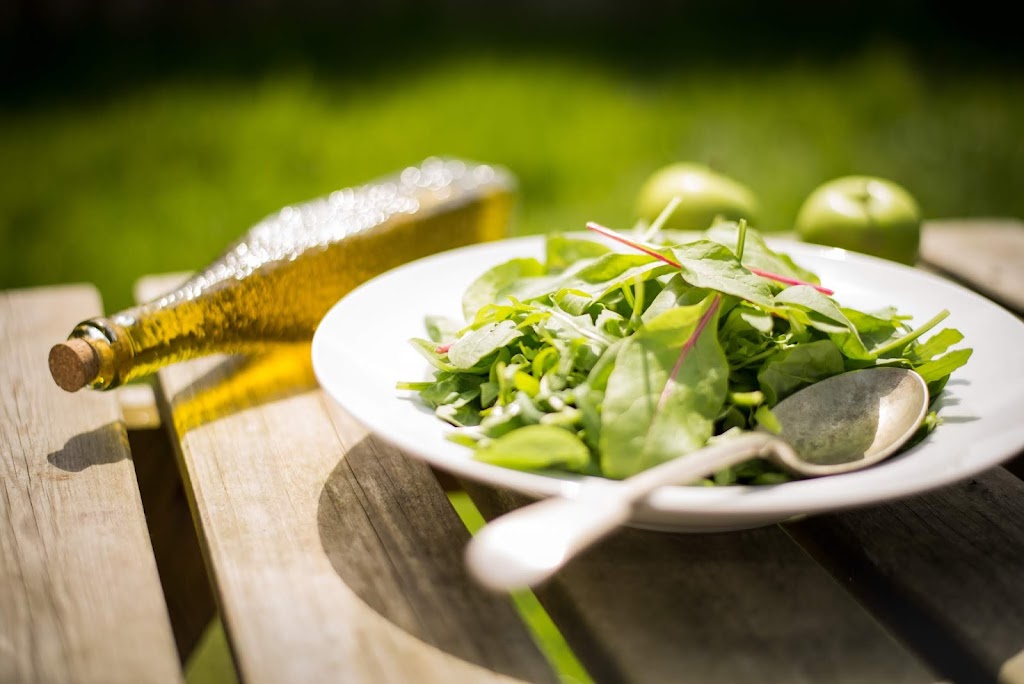Disclaimer: To make this site free for our readers, we earn money from advertising, affiliate sales and sponsorships. Please see our disclosure page for more info on how this works.
*****
No diet is truly optimized without a healthy amount of leafy greens. But maybe you don’t really know your leafy greens from your other greens, and you certainly don’t know why you need them (or how to eat them).
Leafy green vegetables are truly a miracle of nature. They are loaded with vitamins and minerals and are low in calories so you can eat plenty of them without gaining weight. Leafy greens can be eaten as side dishes, in sandwiches, as part of stir fries and casseroles and can be eaten in numerous types of salads. They can even be thrown in smoothies.
What are leafy greens?
There are both common and relatively uncommon leafy green vegetables available to you. Most you can buy at the produce department at your local supermarket but others you may have to grow in containers in your house or in a garden, or visit a store like Whole Foods.
Leafy green vegetables include:
· Spinach
· Kale
· Broccoli
· Red and Green Leaf and Romaine Lettuce
· Cabbage
· Mustard greens
· Dandelion greens
· Swiss chard
· Escarole
· Turnip greens
What makes leafy greens so special?
Disease Prevention
It seems that Mother Nature knows what she’s doing, as leafy greens contain disease preventing plant-based substances that may help protect from diabetes, heart disease and even various cancers, mainly because of the powerful antioxidants they offer. Kale for example, is a great source of vitamins A C, K, calcium and also supplies folate and potassium.
Weight Loss
These vegetables have so few calories that they hardly even count and lettuce, kale and spinach can be eaten in abundance. These are also high fibre foods and so they keep you full longer and allow you to eat less. Another benefit of the fibre is that it helps to stabilise blood sugars, and that results in less out of control cravings for sweets and other junk.
Learn more about healthy weight loss by downloading our free report (no strings, just click that link and read online or click the icons to print or download).
Vitamin K
Different leafy greens have different properties but all of them can be considered good for you. They contain vitamin K, which is essential in helping the body to properly clot blood. Vitamin K also helps prevent several conditions related to advancing age and can help prevent bone loss, arterial calcifications, kidney damage and heart disease.
Just a single cup of most leafy green vegetables will provide you with more than enough vitamin K for your system per day. Kale is especially helpful, providing about six times the recommended intake of vitamin K.
Lower Cholesterol
You can actually lower your cholesterol by eating leafy green vegetables. The bile acids produced by the liver which help fats digest from the gastrointestinal tract are bound by the fiber in the leafy greens. The bile acids pass through the body along with the residue of leafy green vegetables, forcing the liver to use up even more cholesterol to make bile acids.
This reduces your endogenous cholesterol level. There was one study in the Nutrition Research journal that indicated that slightly steamed kale and mustard greens did the best job of binding bile acids.
Eye Health
Leafy green vegetables are good for the eyes. The best leafy greens to eat for eye health are mustard greens, Swiss chard, kale and dandelion greens because they are high in carotenoids such as lutein and zeaxanthin.
Carotenoids help filter the high energy light caused by sun and therefore prevent sun-induced cataracts. These carotenoids also improve overall visual acuity.
Vitamin B5
A cup of raw escarole can help your body by adding pantothenic acid, also called vitamin B5. The B vitamins together help carbohydrates break down into glucose to be used for cellular fuel.
The body cannot store B vitamins each day so you need to find a daily source for these vitamins. What better way than to incorporate escarole in your diet.
Calcium For Bone Health
Leafy green vegetables contain large amounts of calcium. It’s the calcium that gives these foods their slightly bitter taste.
While leafy greens do not give you alone the amount of calcium you need in one day (about a thousand milligrams of calcium per day for women between 30 and 50), they provide easily absorbable kinds of calcium. A half a cup of dandelion greens will give you about 75 mg of calcium, while mustard greens can give you 55 mg calcium.
Considering that these are virtually fat free foods, they can make a great alternative to high fat dairy foods if you’re trying to go for a healthy diet..
Prevent Colon Cancer
Kale and mustard greens may help prevent colon cancer. In a study in one journal, those people that ate more of these leafy greens suffered a lower risk of developing this form of cancer.
How do you eat leafy greens?
Leafy greens can be eaten raw in salads or can be steamed and mixed with things like herbs, other vegetables, or added to stir-fry. Generally, it is advisable to have as little heat applied to these vegetables as possible to keep their nutritional content intact.
Kale and spinach both are at risk for overcooking very fast because they cook so quickly. So they are both great ingredients to eat raw as a salad green or add to a green smoothie.
Want to grow your own green leafy veggies? I recommend this book.
Want to improve your life, week by week? Get our free guide, 20 Things To Do Every Week.

